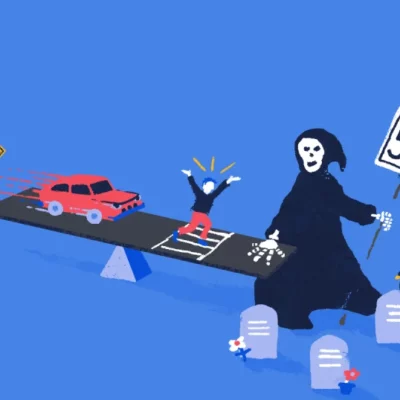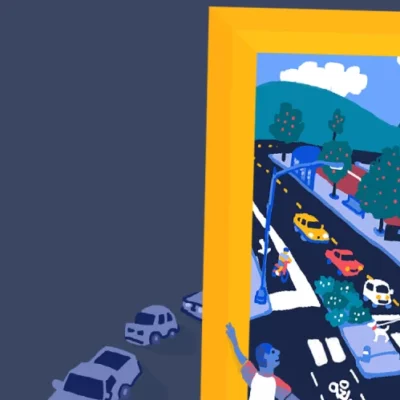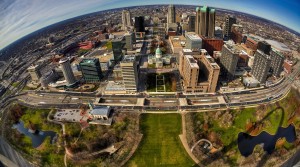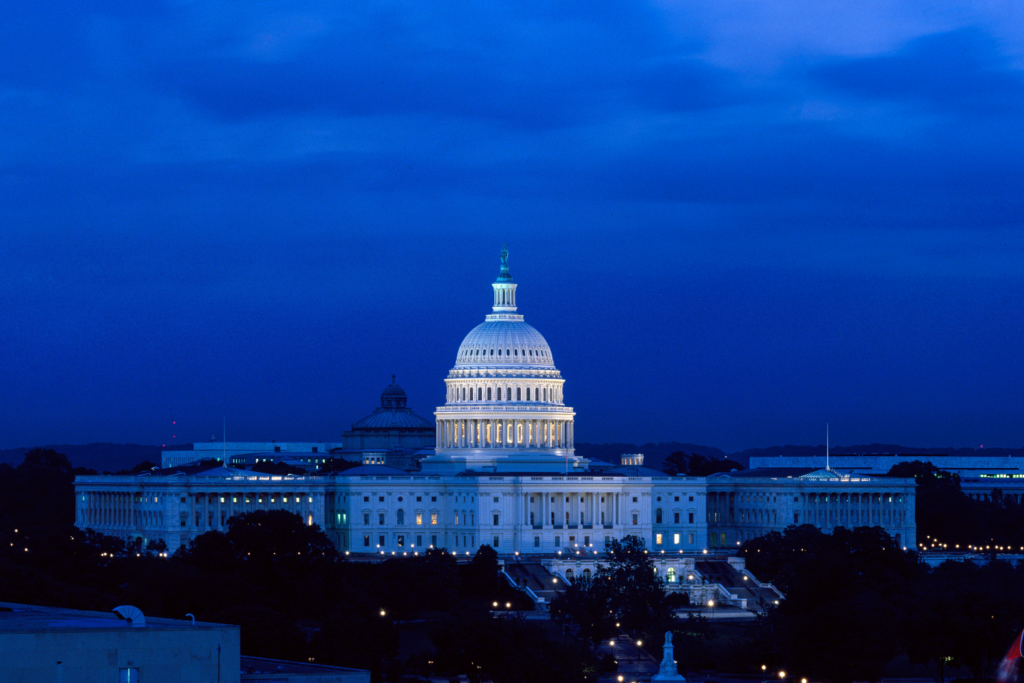
Bipartisan infrastructure deal update: What we need to see
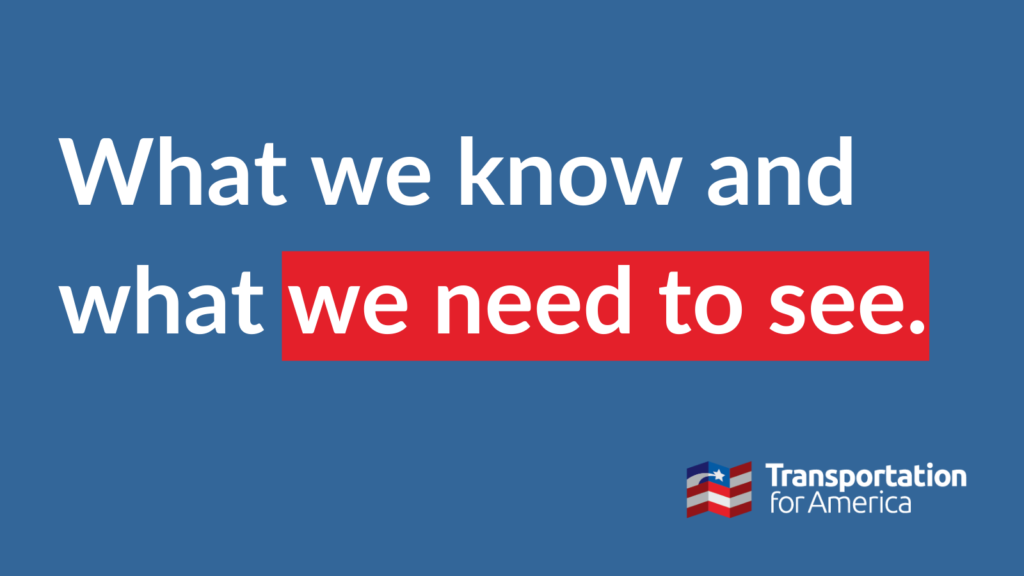
With Capitol Hill abuzz about transportation infrastructure, Transportation for America wants to remind Congress of key policies that must be incorporated into a bipartisan infrastructure bill (as well as a final transportation reauthorization bill.)
(UPDATE 7/15: Senate info added and call script below, post clarified to focus on bipartisan deal.)
Transportation has been the main topic on Capitol Hill in recent weeks with the recently passed House INVEST Act, a deal struck between a bipartisan group of senators and the President, and momentum building for transit operating support legislation in the House and Senate. Over in the Senate, there’s a mediocre highway title and a pretty good passenger rail and safety title. (While the transit title is still missing, we’re hoping for something soon.)
Also in the mix is the standalone bipartisan infrastructure framework. The Senate plans to consider the legislative language of that bipartisan compromise deal next week (the week of July 19th), to pair policies with those basic, top-line funding numbers released a few weeks ago. That framework is coming into focus with the understanding that its funding amounts are new, additional money that adds additional dollars to the current FAST Act authorized amounts.
Process-wise, this deal is unlikely to go through the traditional conferencing process where the House and Senate negotiate the bill through committee conferences. This means Senate and House leaders are likely to produce a bill by negotiating bill text before a bill is introduced and passed in either chamber and then simply bring that final bill to the Senate floor for a vote and then the House floor for a vote.
A “compromise” can’t mean settling for the broken status quo
Senators from just 22 states have an outsize role in producing the final product. If you live in one of these states listed below, call the Capitol Switchboard at (202) 224-3121 and ask to speak to your Senator’s office? It’s surprisingly easy and will take just five minutes. Ask to speak to anyone working on the infrastructure deal. Here’s a short script you can use when you get to leave your message:
“I live in [STATE] and I’m calling about the infrastructure deal. I’m glad that we’re investing in infrastructure, but we have to do it right, and this potential deal must do four key things.
First, states are still spending money on new roads we can’t afford to maintain. This deal must prioritize repair with our tax dollars first. Second, we need to invest in transit like we did with highways in the 1950s and 60s to give more people more options for getting around. Third, we need to address the deep inequities in our communities. The House transportation proposal included significant money to tear down highways that destroyed neighborhoods and focus on healing divided communities. That’s the kind of thinking we need in this deal. Lastly, the deal has to prioritize safety for all people on our streets. The ways we currently design and build streets prioritize vehicle speed over the safety of people, and that’s one reason we’re seeing record levels of people being killed on our streets.
That’s all. Thank you for your time.”
Key Senators
ALASKA
Murkowski
ARIZONA
Sinema
Kelly
COLORADO
Hickenlooper
DELAWARE
Carper
Coons
INDIANA
Young
KANSAS
Moran
LOUISIANA
Cassidy
MAINE
Collins
King
MISSISSIPPI
Wicker
MONTANA
Tester
NORTH CAROLINA
Tillis
Burr
NEW HAMPSHIRE
Hassan
Shaheen
NEVADA
Rosen
NEW YORK
Schumer
OHIO
Brown
Portman
PENNSYLVANIA
Toomey
SOUTH CAROLINA
Graham
SOUTH DAKOTA
Rounds
UTAH
Romney
VIRGINIA
Warner
WASHINGTON
Cantwell
WEST VIRGINIA
Capito
Manchin
Here are more details on the key policy priorities that MUST be incorporated into any bill that invests in transportation infrastructure:
Accountability to fix our roads and bridges, not just rhetoric
The administration has claimed that the money for highways in the bipartisan proposal is all about maintenance and repair. We need to see more than rhetoric.
There is a huge maintenance backlog on our roads, bridges, and transit infrastructure, and we only have so much money we can invest. The priority must be on first addressing the maintenance backlog. Additionally, for any new proposed transportation capacity, a maintenance plan needs to be part of the equation before adding more infrastructure into the mix with no plan for how to maintain it.
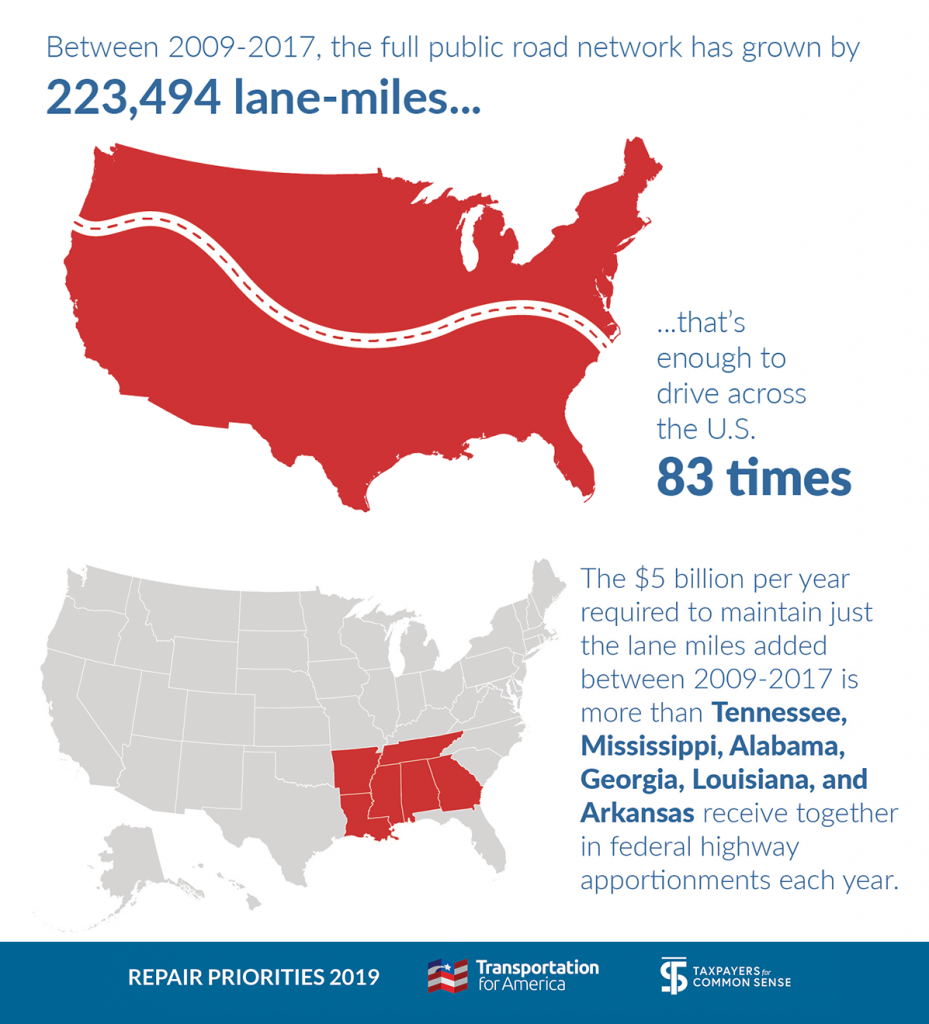
The House transportation committee supported this concept unanimously in 2020 and it was incorporated into the INVEST Act a few weeks ago as well. The Senate’s highway proposal failed completely on this count and as of now, there is no hard and fast requirement in the bipartisan deal to prioritize repair. Failing to include such a provision would be a colossal mistake.
Highway-style commitment to transit
For every dollar of transportation investment, only twenty cents goes towards transit (and the rest towards highways). This is a huge imbalance between a mode of transportation focused on vehicle movement and speed and another focused on moving people, providing equitable access to mobility, and connecting communities to opportunities. It’s time to focus transportation investment on people and the environment first.
The transportation reauthorization bill should increase transit funding to the level of highways and fund transit operations. Providing operating support for transit agencies would allow them to increase frequency and expand service to efficiently move more riders, which will also have immediate and lasting impacts on climate change. In fact, providing people more options to get around without a car (in addition to electrifying the fleet) is an essential component of ratcheting down greenhouse gas emissions. It is also a strategy that will give everyone improved access to jobs and services and better health outcomes—especially for low-income households and communities of color. The Stronger Communities through Better Transit Act in the House works to help bridge the transit parity gap with highways.
Address inequities in our communities
Transportation is a public good that provides people and goods with mobility and accessibility between and within communities. However, transportation public works projects—especially our national highway system—have historically torn through established communities, specifically targeting marginalized communities. It’s high time to redress those wrongs in the federal transportation program by providing funding to remove highway infrastructure that divides communities while mitigating the displacement of marginalized communities, providing people with equitable access to jobs and services, and, giving local communities control to guide the process (versus being dictated by their state department of transportation).
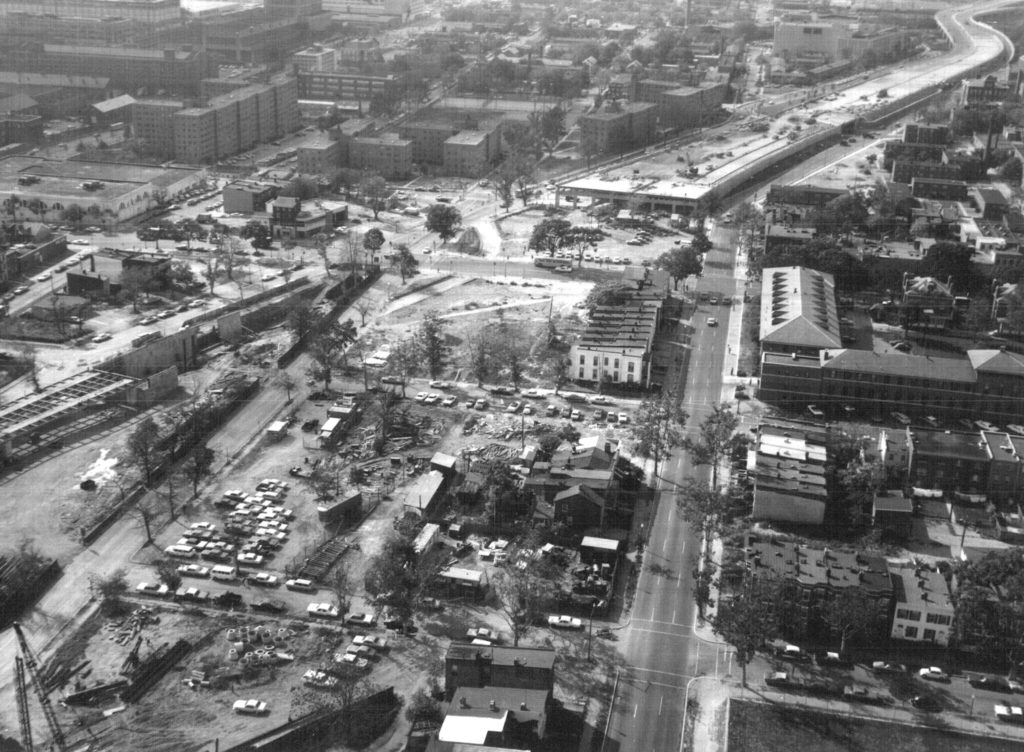
The Southeast/Southwest freeway in Washington, DC under construction in 1968, which plowed through homes and cut off southwestern and southeastern DC neighborhoods from downtown and the Mall. Photo by DDOT on Flickr.
Specifically, the final transportation reauthorization bill needs to include a competitive grant program, akin to the INVEST Act’s $3 Billion Reconnecting Neighborhoods program, aimed at not only capital and planning costs for eligible communities to redesign or deconstruct divisive infrastructure, but enabling the creation of land trusts to avoid community displacement, empowering local decision making and implementation, and updating the transportation planning process to be cognizant of holistic multimodal transportation impacts for all users.
Design and invest in safety for all users
You would think reduced driving trends in 2020 due to COVID-19 would have caused a drop in traffic fatalities. Unfortunately the opposite was true—fatalities were up everywhere, reaching historic highs.
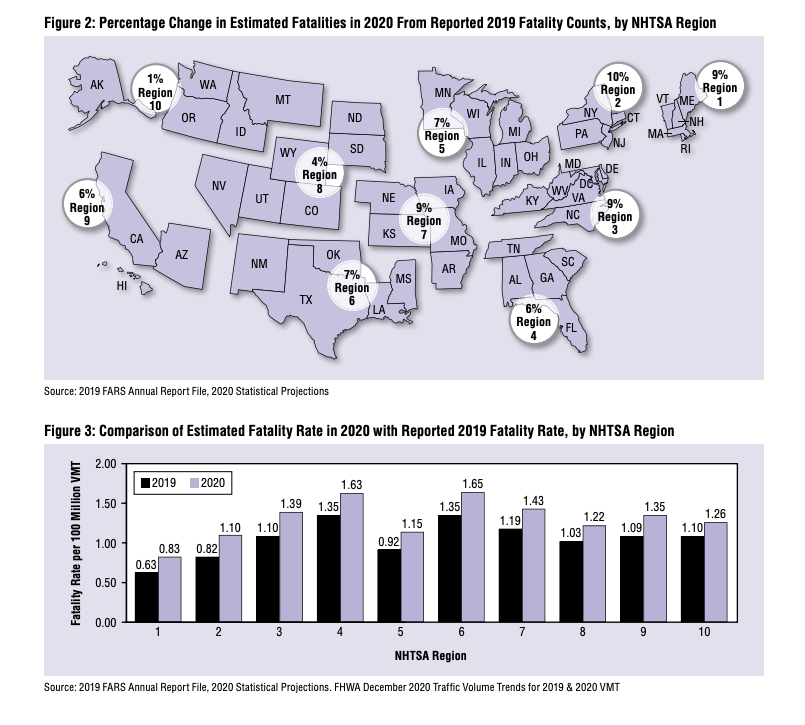
From NHTSA’s Early Estimate of Motor Vehicle Traffic Fatalities in 2020 report, available here
Traffic deaths increased overall, with a disproportionate number of fatalities impacting pedestrians, cyclists, and marginalized populations. The trend is not new, and is only intensifying over time, and it is evidence of how our existing methods of designing and building streets are inherently unsafe and prioritize a need for vehicle speed over all other users. The final transportation reauthorization bill needs to fundamentally change our design standards to emphasize people movement across all modes.
It furthermore needs to require states and metropolitan areas to target their investments and document performance on reducing fatalities on their roadways instead of continued lip service and wasted tax dollars only perpetuating more fatalities.
Drafters of the final bill should look to the various examples from the INVEST Act that tackle safety and design of the transportation network, from the regulatory framework in reimagining the MUTCD, accountability measures that ensure transportation investments do indeed reduce traffic fatalities for all users, and competitive grant programs for local communities to plan, design and implement Complete Streets and Vision Zero plans.
